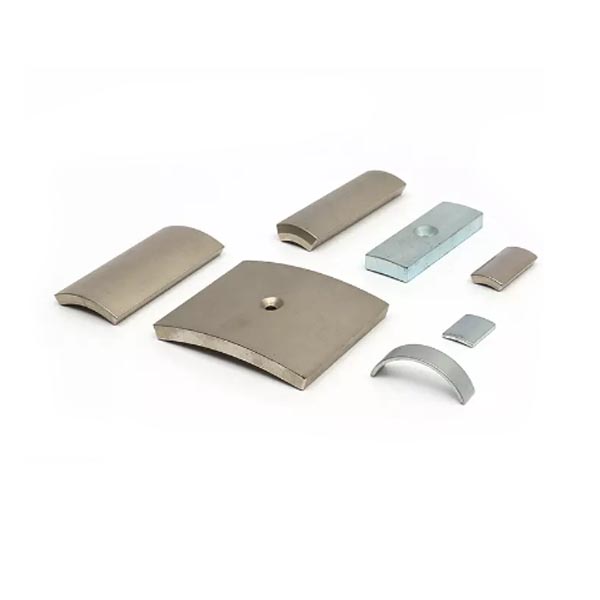Magnets have been fascinating objects for centuries, captivating scientists and enthusiasts alike with their mysterious ability to attract certain materials. From compass needles guiding ancient explorers to the intricate mechanisms of modern technology, magnets play a crucial role in various aspects of our lives. But how do we quantify the strength of these magnetic fields? How do we measure the potency of magnets? Let's delve into the methods and tools used to quantify the strength of a magnet.
Magnetic Field Strength
The strength of a magnet is fundamentally determined by its magnetic field, the area around the magnet where its influence is felt. This field is represented by lines of force, extending from the magnet's north pole to its south pole. The greater the density of these lines, the stronger the magnetic field.
Gauss and Tesla: Units of Measurement
To quantify the strength of a magnetic field, scientists use two primary units of measurement: Gauss and Tesla.
Gauss (G): Named after the German mathematician and physicist Carl Friedrich Gauss, this unit measures the magnetic flux density or magnetic induction. One Gauss is equal to one Maxwell per square centimeter. However, due to the relatively small magnitude of Gauss, particularly in modern contexts, scientists often use Tesla for stronger magnetic fields.
Tesla (T): Named in honor of the Serbian-American inventor and electrical engineer Nikola Tesla, this unit represents a larger magnetic flux density compared to Gauss. One Tesla is equal to 10,000 Gauss, making it a more practical unit for measuring stronger magnetic fields, such as those produced by powerful magnets used in scientific research or industrial applications.
Magnetometers
Magnetometers are instruments designed to measure the strength and direction of magnetic fields. These devices come in various forms, ranging from simple handheld compasses to sophisticated laboratory equipment. Here are some common types of magnetometers used for measuring magnetic field strength:
1. Fluxgate Magnetometers: These magnetometers utilize the principles of electromagnetic induction to measure changes in magnetic fields. They consist of one or more magnetic cores surrounded by coils of wire. When exposed to a magnetic field, the cores become magnetized, inducing an electrical signal in the coils, which can be measured and calibrated to determine the strength of the magnetic field.
2. Hall Effect Magnetometers: Hall effect magnetometers rely on the Hall effect, which describes the generation of a voltage difference (Hall voltage) across an electrical conductor when subjected to a magnetic field perpendicular to the current flow. By measuring this voltage, Hall effect magnetometers can determine the strength of the magnetic field.
3. SQUID Magnetometers: Superconducting Quantum Interference Device (SQUID) magnetometers are among the most sensitive magnetometers available. They operate based on the quantum properties of superconductors, allowing them to detect extremely weak magnetic fields, down to the level of femtoteslas (10^-15 Tesla).
Calibration and Standardization
To ensure accurate measurements, magnetometers must be properly calibrated and standardized. Calibration involves comparing the output of the magnetometer with known magnetic field strengths to establish a linear relationship between the instrument's readings and the actual magnetic field values. Standardization ensures that measurements taken with different magnetometers are consistent and comparable.
Applications of Magnetometry
The ability to measure magnetic field strength accurately has numerous applications across various fields:
Geophysics: Magnetometers are used to study the Earth's magnetic field, which provides valuable information about the structure and composition of the planet's interior.
Navigation: Compasses, a type of magnetometer, have been essential tools for navigation since ancient times, helping sailors and explorers find their way across vast oceans.
Materials Science: Magnetometry is used to characterize magnetic materials and study their properties, essential for the development of technologies such as magnetic storage devices and magnetic resonance imaging (MRI) machines.
Space Exploration: Magnetometers are deployed on spacecraft to study the magnetic fields of celestial bodies, providing insights into their composition and geological history.
Conclusion
The measurement of magnetic field strength is essential for understanding the behavior of magnets and their applications across various fields. Through units such as Gauss and Tesla and instruments like magnetometers, scientists can accurately quantify the strength of magnetic fields, paving the way for advancements in technology, exploration, and scientific research. As our understanding of magnetism continues to deepen, so too will our ability to harness its power for the benefit of humanity.
Your Custom Neodymium Magnets Project
We can offer the OEM/ODM services of our products. The product can be customized according to your personalized requirements, including the size, Shape, performance, and coating. please offer your design documents or tell us your ideas and our R&D team will do the rest.
Post time: Mar-15-2024







